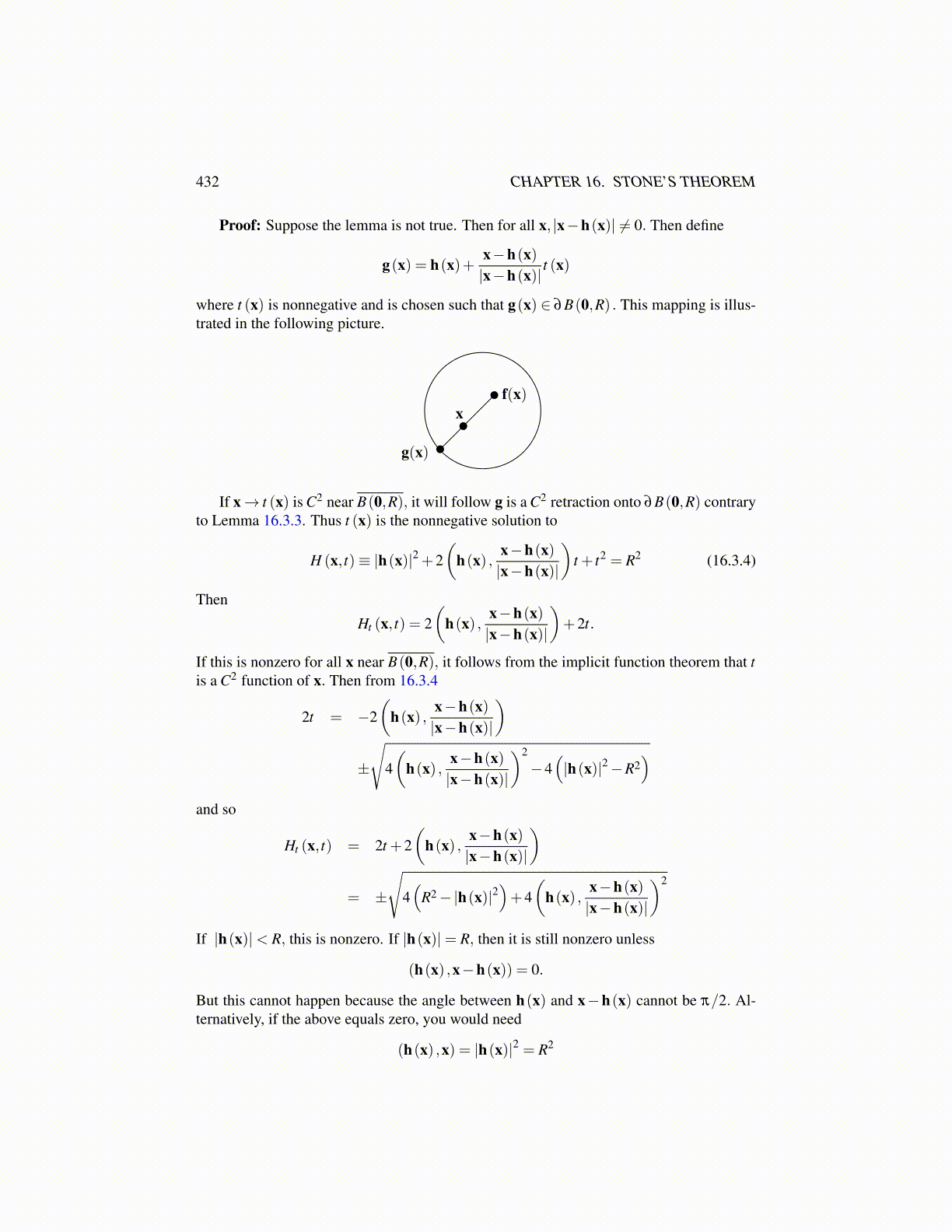
432 CHAPTER 16. STONE’S THEOREM
Proof: Suppose the lemma is not true. Then for all x, |x−h(x)| ̸= 0. Then define
g(x) = h(x)+x−h(x)|x−h(x)|
t (x)
where t (x) is nonnegative and is chosen such that g(x) ∈ ∂B(0,R) . This mapping is illus-trated in the following picture.
f(x)x
g(x)
If x→ t (x) is C2 near B(0,R), it will follow g is a C2 retraction onto ∂B(0,R) contraryto Lemma 16.3.3. Thus t (x) is the nonnegative solution to
H (x, t)≡ |h(x)|2 +2(
h(x) ,x−h(x)|x−h(x)|
)t + t2 = R2 (16.3.4)
Then
Ht (x, t) = 2(
h(x) ,x−h(x)|x−h(x)|
)+2t.
If this is nonzero for all x near B(0,R), it follows from the implicit function theorem that tis a C2 function of x. Then from 16.3.4
2t = −2(
h(x) ,x−h(x)|x−h(x)|
)
±
√4(
h(x) ,x−h(x)|x−h(x)|
)2
−4(|h(x)|2−R2
)and so
Ht (x, t) = 2t +2(
h(x) ,x−h(x)|x−h(x)|
)
= ±
√4(
R2−|h(x)|2)+4(
h(x) ,x−h(x)|x−h(x)|
)2
If |h(x)|< R, this is nonzero. If |h(x)|= R, then it is still nonzero unless
(h(x) ,x−h(x)) = 0.
But this cannot happen because the angle between h(x) and x−h(x) cannot be π/2. Al-ternatively, if the above equals zero, you would need
(h(x) ,x) = |h(x)|2 = R2